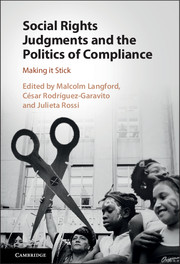Part I - Overview
Published online by Cambridge University Press: 16 March 2017
Summary

- Type
- Chapter
- Information
- Social Rights Judgments and the Politics of ComplianceMaking it Stick, pp. 1 - 108Publisher: Cambridge University PressPrint publication year: 2017



